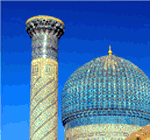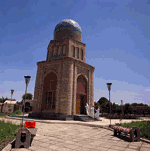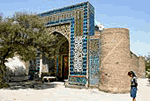Introduction
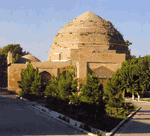 Timur’s hometown Shakhrisabz is a small town south of Samarkand. By the time of birth of Timur on 9 April 1336 at the village of Hoja Ilghar, 13 km to the south from Kesh (former name of Shakhrisabz), Kesh was ruled by the Barlas clan, Mongols of the Chaghatai khanate, turkicised by their long stay in the fertile Kashkadarya valley. Using his Barlas lineage, Tamerlane gathered a band of followers, who helped him to become from a sheep-rustler to the lord of the valley by the age of 25. A decade later he became a lord of the whole Transoxiana, making the Samarkand the capital of his empire. As he rose to power, Timur paid great effort to strengthen and beautify Kesh. He built Ak Saray, the white palace, surrounded it by high walls and a deep moat, crossed by drawbridge, and laid out green gardens which gave a new name of Shakhrisabz (Tajik for “Green Town”).
Timur’s hometown Shakhrisabz is a small town south of Samarkand. By the time of birth of Timur on 9 April 1336 at the village of Hoja Ilghar, 13 km to the south from Kesh (former name of Shakhrisabz), Kesh was ruled by the Barlas clan, Mongols of the Chaghatai khanate, turkicised by their long stay in the fertile Kashkadarya valley. Using his Barlas lineage, Tamerlane gathered a band of followers, who helped him to become from a sheep-rustler to the lord of the valley by the age of 25. A decade later he became a lord of the whole Transoxiana, making the Samarkand the capital of his empire. As he rose to power, Timur paid great effort to strengthen and beautify Kesh. He built Ak Saray, the white palace, surrounded it by high walls and a deep moat, crossed by drawbridge, and laid out green gardens which gave a new name of Shakhrisabz (Tajik for “Green Town”).
Continue reading “Shakhrisabz”

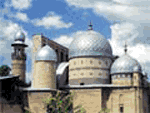 Ancient cities of Uzbekistan were located on the ancient Silk Road, the trading route between China and the West. The route took its name from silk, the commodity most in demand in Europe from China during the Roman period. Some of the most influential and savage conquerors came and ruled these lands.
Ancient cities of Uzbekistan were located on the ancient Silk Road, the trading route between China and the West. The route took its name from silk, the commodity most in demand in Europe from China during the Roman period. Some of the most influential and savage conquerors came and ruled these lands.
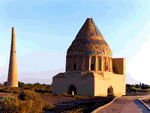
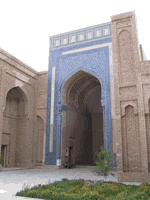
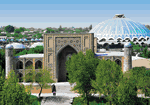
 Timur’s hometown
Timur’s hometown 